Honda Cars Philippines, Inc. (HCPI) has launched the 2024 CR-V in the local market. This is the sixth-generation model, and it presents a couple of improvements over the old model, as well as a totally new exterior design. Its top-spec variant even received a new dual-motor hybrid powertrain.
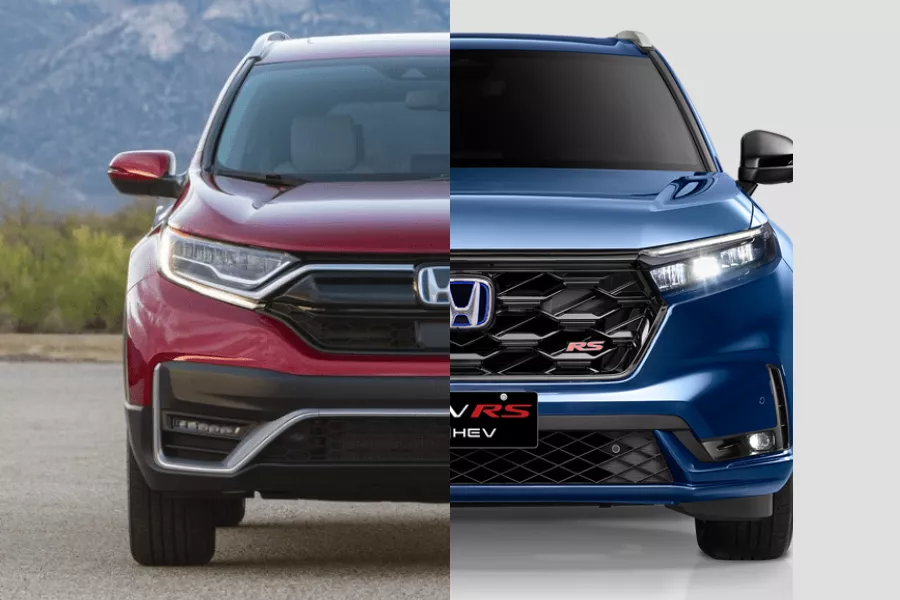
How are they different? Let's find out
The company is offering three variants – the base V, mid-spec VX, and top-spec RS e:HEV Hybrid. So how does the new CR-V compare against the old CR-V? To answer that, let’s go through both from the inside out and also see just how much this popular Honda crossover has changed.
Honda CR-V Old vs New: Exterior
To start, the old Honda CR-V is 4,623mm long, 1,855mm wide, and 1,658mm in height. It also has a wheelbase length of 2,662mm. The new one meanwhile is 4,691mm long, 1,866mm wide, and 1,681mm (1,691mm in the VX) in height. Its wheelbase then spans 2,701mm (2,700mm in the VX).

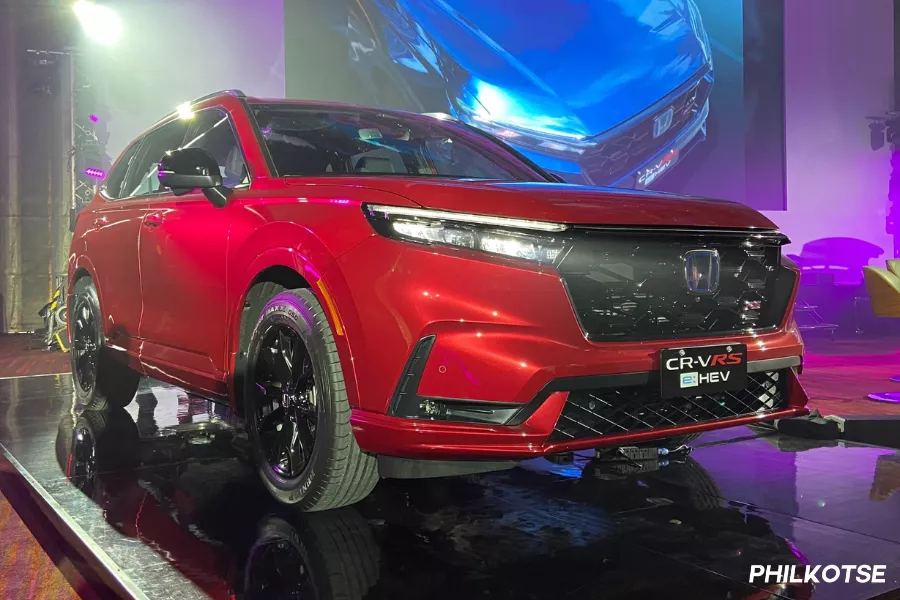
Old vs new (front): 2024 Honda CR-V
In general, the new CR-V is a bit larger than the old, outgoing version. It also has a much longer wheelbase.
Style-wise, the new CR-V looks more contemporary and more aggressive than the old model. It still sports a hexagonal grille, though instead of slats this piece now features a mesh-like design similar to that on the new Honda HR-V.
The headlamps on the new model also appear to be tilted to sweep up in a parallel fashion along the shape of the hood much like the outgoing model. The new standard full LED headlamps also sport a much cleaner look, and the standard LED daytime running lamps are now positioned above the main headlamp cluster instead of below it.
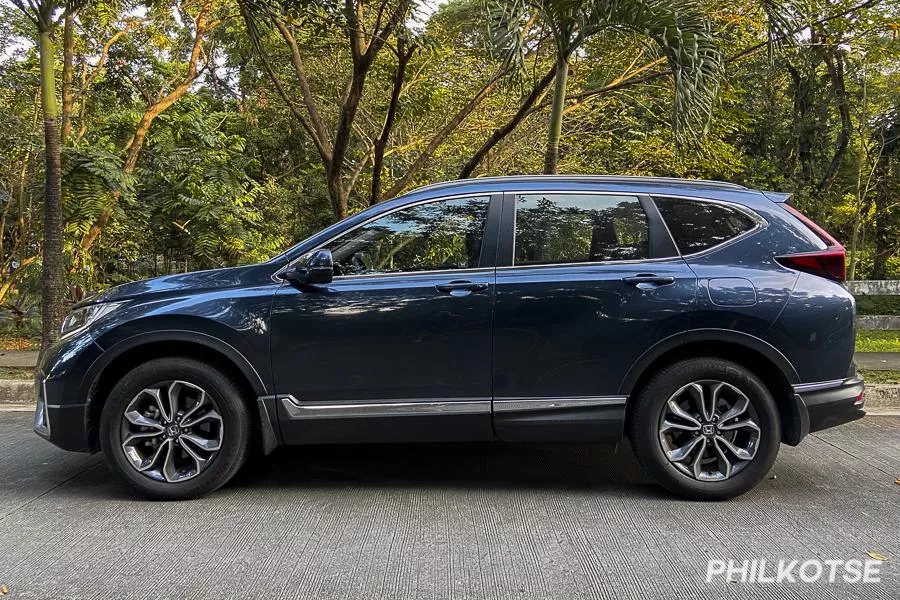

Old vs new (side): 2024 Honda CR-V
The lower bumper of the new 2024 Honda CR-V also gets a wider lower front air intake in black compared to the old model.
From the side, the old CR-V features more curves, whereas the new model clearly has less. We can also see that it uses a set of 18-inch wheels – piano black aluminum alloy in the RS e:HEV and silver aluminum alloy in the V and VX.
Towards the rear, straight-cut character lines are present as well. The shape of the new CR-V's standard LED taillights does mirror the old one’s shape, though, like the rest of the vehicle, these also appear to have a cleaner, more distinct shape. The new CR-V's rear also has no chrome pieces except for the dual exhaust tips.
Honda CR-V Old vs New: Interior
The all-new 2024 CR-V comes with an identical interior design to the new Honda Civic. It appears sleeker and more minimalist compared to the old CR-V.
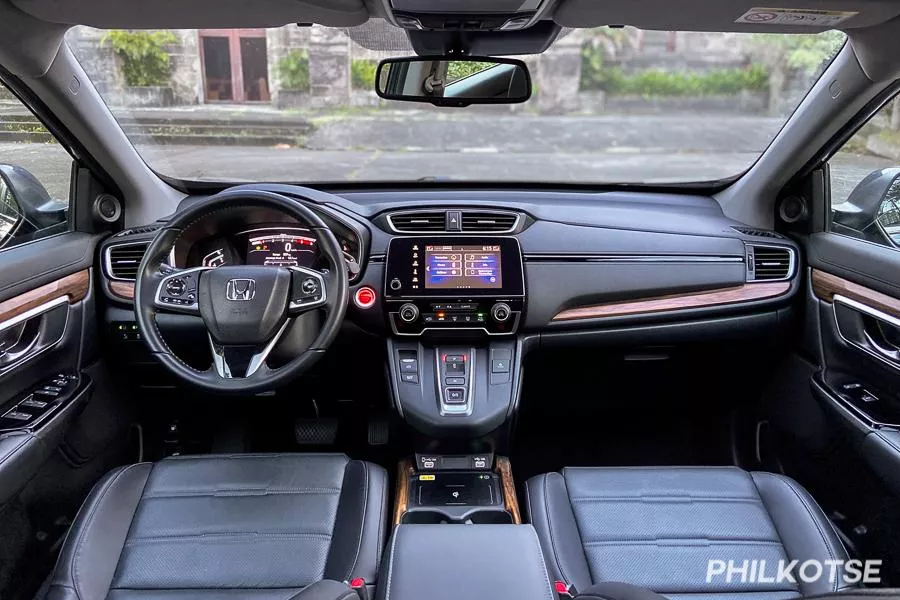
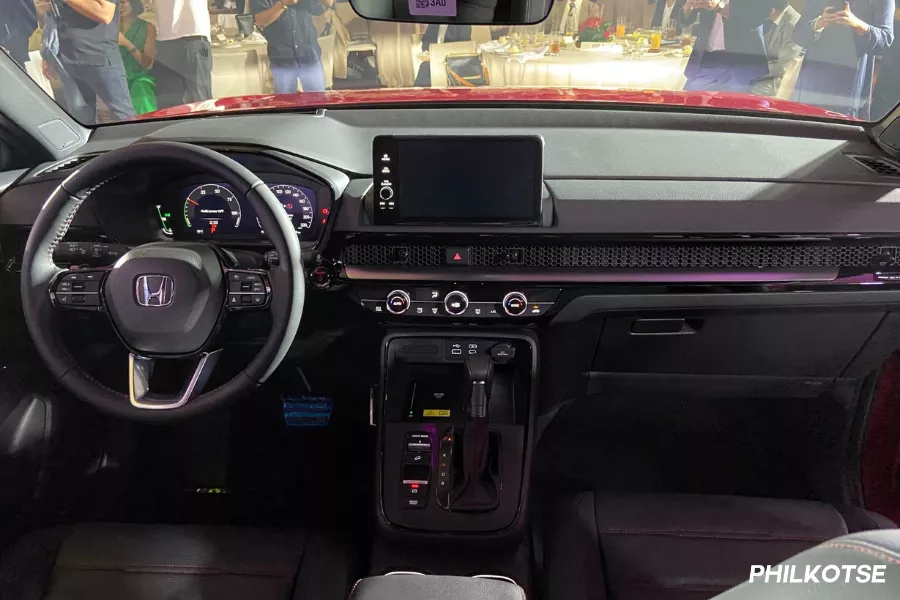
Old vs new (interior): 2024 Honda CR-V
Where the old CR-V had a bulging center stack and a large-ish dash, the new one now comes with a slimmer dashboard and an even slimmer-looking center console, especially when compared to the old CR-V. Specifically, the old CR-V's dashboard also had a multi-tiered look, while the new CR-V looks like a singular straight piece.
The aircon (AC) vents on the old CR-V also come in a squarish shape with slats, while the new ones are rectangular, and are much elongated to suit the sleeker dash.
Like the old CR-V though, the new version comes with all the good bits that you’d expect from a modern vehicle. It has automatic air-conditioning (dual-zone in the Hybrid and tri-zone in the V and VX), a push-to-start button, charging ports (USB-A and USB-C), power-adjustable front seats, and what-not. Both also feature leather seats, with the RS e:HEV getting red stitching.
Honda CR-V Old vs New: Tech & Safety
The new CR-V has a nine-inch touchscreen as standard, which is, of course, larger compared to the old model’s seven-inch headunit. While the CR-V Hybrid gets a 12-piece Bose audio system, the non-hybrid V and VX are equipped with an eight-speaker setup.
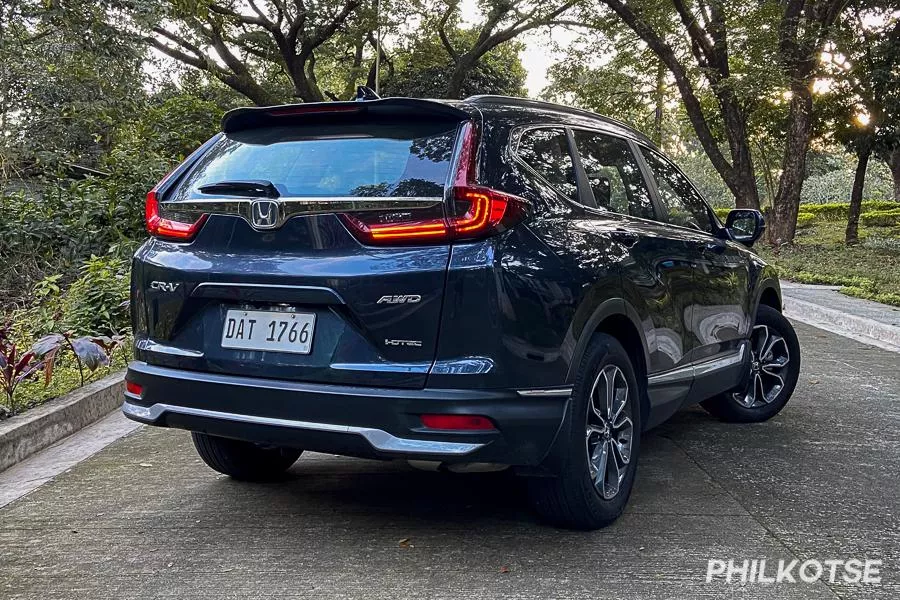
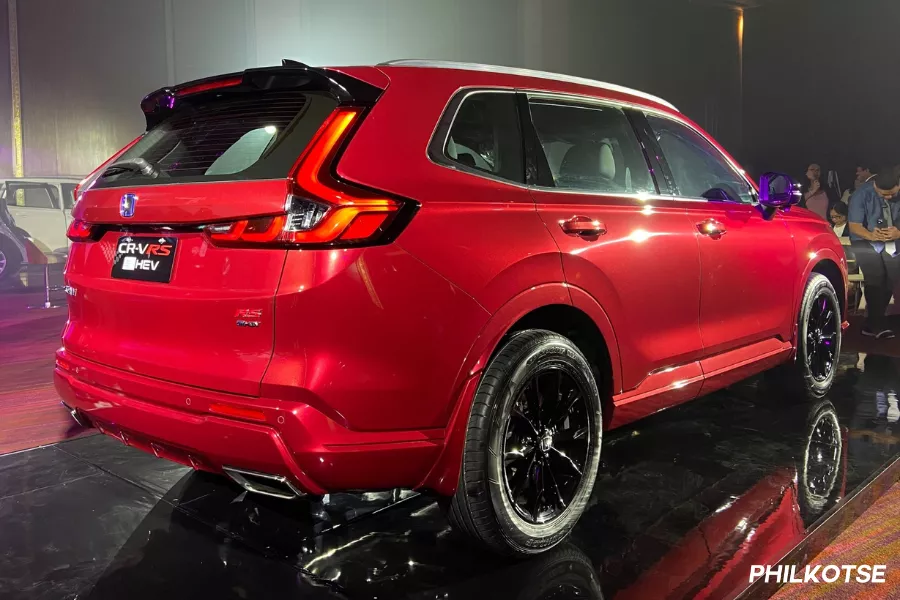
Old vs new (interior): 2024 Honda CR-V
The new head unit now supports wireless Apple CarPlay and Android Auto. The new wireless connectivity is complemented by a wireless charger, which comes as standard across the range. Moreover, the new one does come with navigation except for the entry-level V variant.
For safety, the new CR-V is equipped with front airbags for added safety, a knee airbag, and side and side curtain airbags. The knee airbag is a new addition to the all-new model.
But like the old CR-V, the new one also gets the Honda Sensing driver-assist suite. This means both are kitted out with adaptive cruise control, a low-speed follow function, collision mitigation braking, lane keep assist, road departure mitigation, forward collision warning, lane departure warning, etc.
The all-new CR-V also comes with a free three-year subscription to the Honda Connect app. It allows owners to monitor their vehicles remotely using a smartphone.
Honda CR-V Old vs New: Engine & Performance
For engines, the new CR-V is available with a hybrid and a non-hybrid turbocharged engine. As such, the diesel option available in the old CR-V SX AWD variant is dropped from the range.
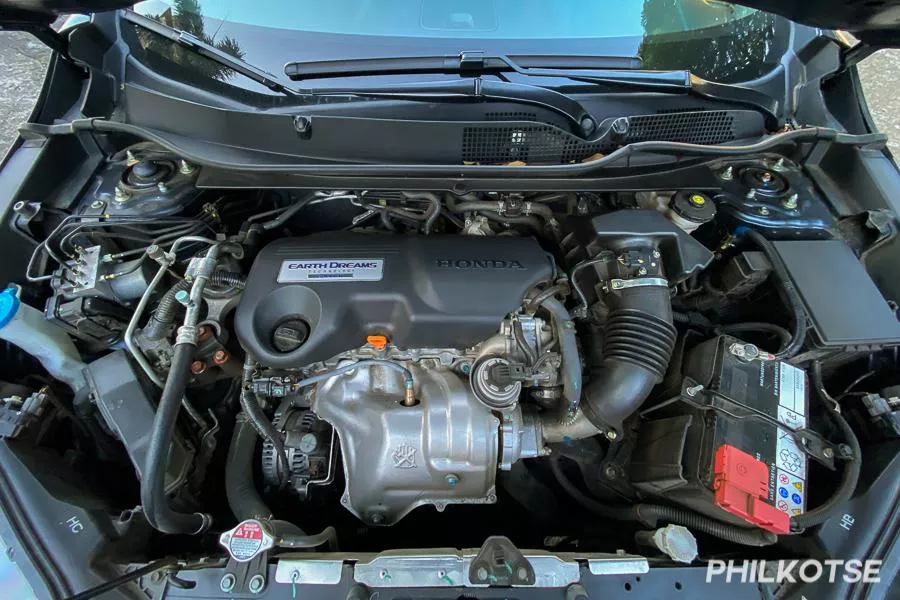
Honda CR-V's old engine
The CR-V RS Hybrid is powered by a 2.0-liter VTEC gasoline engine with 145 horsepower and 183 Nm of torque. It is paired with dual motors that add 181 horsepower and 335 Nm of torque. The hybrid system is completed by a lithium-ion battery. Honda said that the hybrid powertrain generates a combined output of 204 horsepower.
The non-hybrid turbocharged version, meanwhile, has a 1.5-liter turbo engine that produces up to 187 horsepower and 240 Nm of torque.
Suffice it to say, both engine options of the new CR-V are much beefier compared to the old CR-V's choice of engines. For reference, the previous engines were a 2.0-liter gasoline engine with 152 horsepower and 189 Nm of torque and a 1.6-liter turbodiesel good for 118 horsepower and 300 Nm of torque.

Honda CR-V's new engine
The new model is still available in front-wheel-drive (V and RS), or all-wheel-drive (VX). The nine-speed tranny though was dropped, and it now exclusively uses a continuously variable transmission (CVT), with the RS getting an electronic-CVT (e-CVT) with paddle shifters.
Of note, the new CR-V also uses a totally new platform. It is based on the all-new Civic, and it offers more stability and crash safety, according to Honda. The old CR-V meanwhile, was underpinned by the CCA platform, which also linked it to the previous-gen Civic (FC/FK).
HCPI is offering the 2024 CR-V for Php 2,100,000 for the V Turbo, Php 2,280,000 for the VX Turbo, and Php 2,590,000 for the RS Hybrid. The new hybrid variant comes with an eight-year or 200,000 km battery warranty (whichever comes first).
Stay updated here on Philkotse.
Know more about Honda CR-V 2026

The 2025 Honda CR-V is a midsize crossover SUV. For the Philippine market, it has three variants: the V Turbo CVT, VX Turbo CVT, and the RS e:HEV (hybrid) e-CVT.
The latest version of this Honda model has two different engine options. For the top-spec hybrid trim, it uses a 2.0-liter gasoline four-banger paired with a dual motor and lithium-ion battery. The combustion component alone produces up to 145 horsepower and 183 Nm of torque. The electric-powered component meanwhile, can churn out 181 horsepower and 335 Nm of torque.
Aboard the V and VX trims meanwhile is a 1.5-liter inline-4 engine that can churn out 187 horsepower and 240 Nm of torque.
Only the VX gets all-wheel-drive, while the rest are front-wheel-drive. All trims then use a continuously variable transmission (CVT), but the one on the hybrid trim is an electronic CVT (e-CVT).
In terms of dimensions, the all-new CR-V is 4,691mm long, 1,866mm wide, and 1,681mm (1,691mm for VX) in height. Both the hybrid and the V’s wheelbase then spans 2,701mm (2,700mm for VX).
Locally, the Honda CR-V competes against the likes of the Mazda CX-9, Cherry Tiggo 8 Pro, Kia Sorento, Hyundai Santa Fe, Peugeot 5008, etc.
>>> New and used Honda CR-V 2025 for sale in the Philippines
Honda CR-V Launch
The Honda CR-V was introduced to the Philippine market in September 2023. It launched with three different variants: the top-spec RS e:HEV CVT, the mid-spec VX CVT AWD, and the entry-level V CVT FWD. At launch, their prices ranged from Php 2.100 million to Php 2.590 million.
Honda CR-V Exterior
The 2025 CR-V carries the sleekness and the sportiness of the modern Honda design. Present on its front end are a pair of sharp LED headlamps which are outlined by LED daytime running lamps, a black-colored hexagonal mesh grille, and an angular front lower bumper.
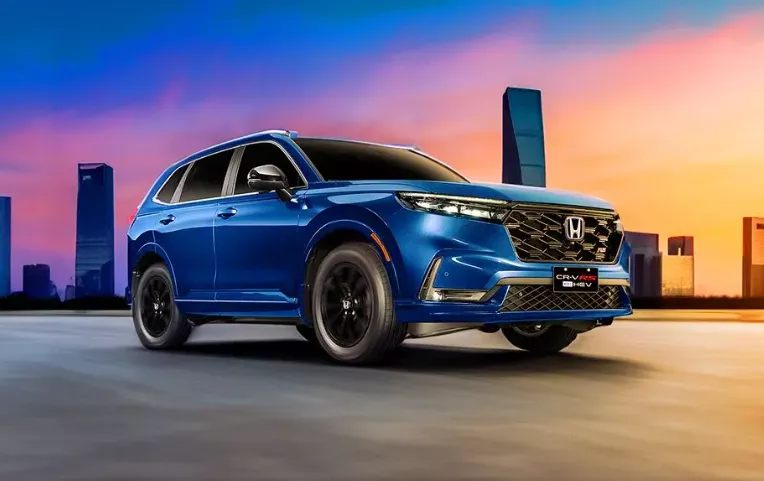
The sides then feature power-folding side mirrors, a straight window line, and black plastic claddings for the VX and V. Its rear likewise gets a power tailgate, and a distinctively shaped pair of LED taillights.

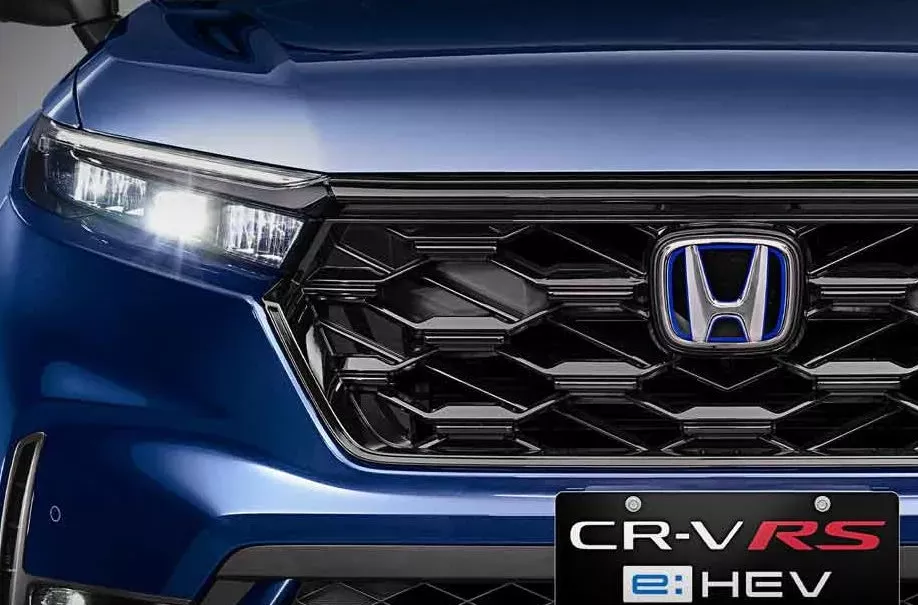
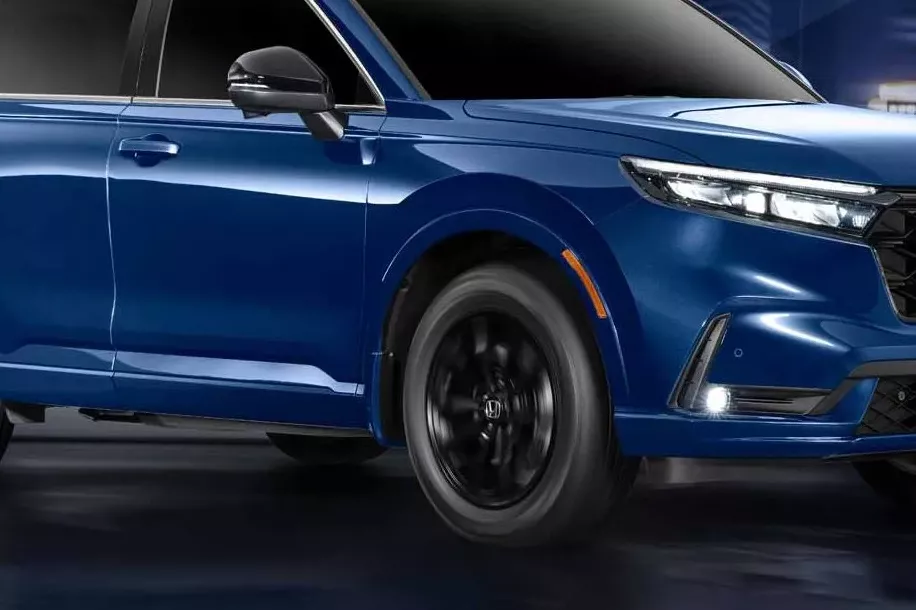
The RS hybrid trim stands out among the three as it gets plenty of additions mainly focused on style. This includes a black color for its side mirrors and antenna, body-color mudguards, and a set of 18-inch piano black alloy wheels.
Honda CR-V Interior
Inside, the top-spec RS e:HEV can seat up to five, whereas the V and VX can accommodate up to seven.
Present on all trims is a 10.2-inch digital gauge cluster, leather seats (w/ red stitching for the RS), a push-to-start button, USB A and C charging ports, an eight-way power adjustable driver’s seat (w/ power lumbar support for RS), auto-dimming rearview mirror, etc.
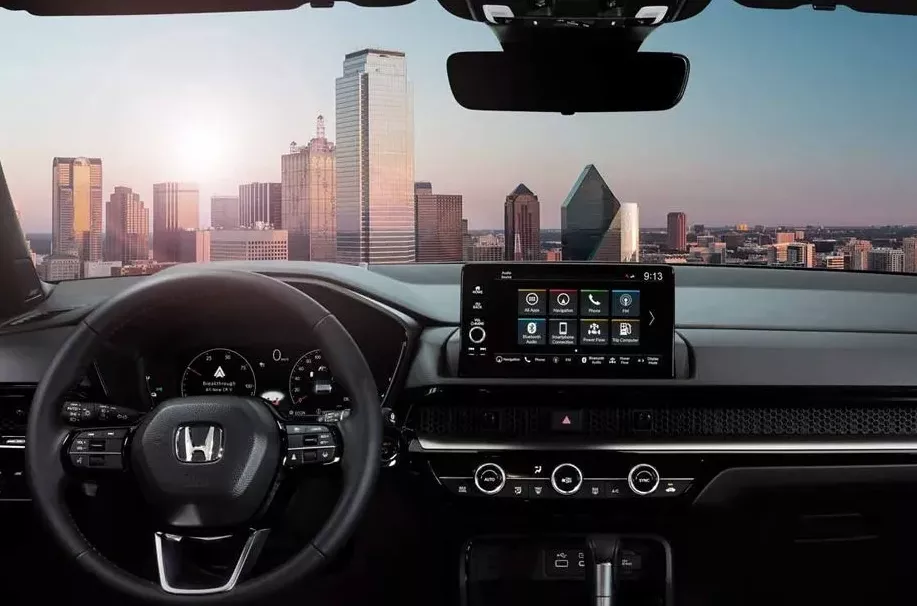
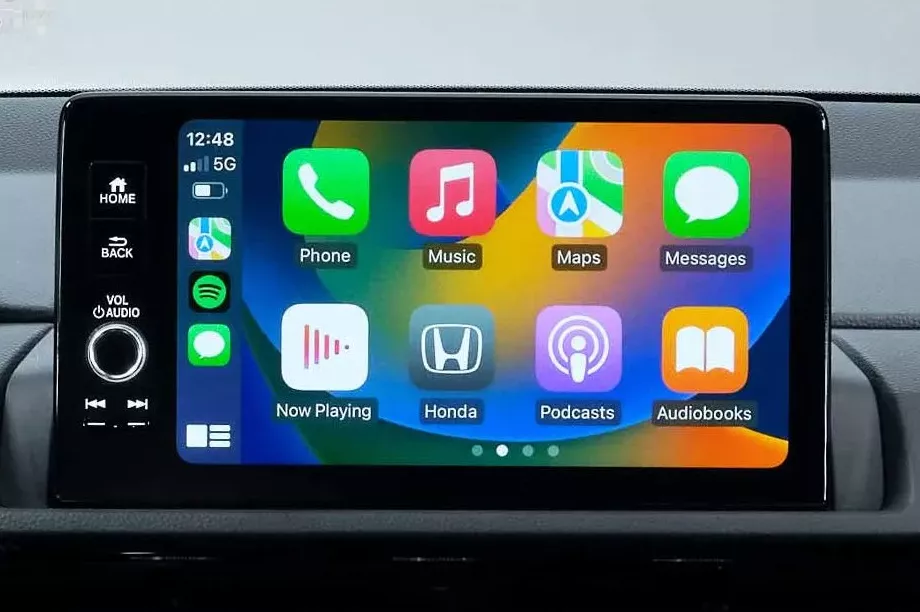
Only the RS and VX get rain-sensing wipers but exclusive only to the highest-spec trim are a sunroof, paddle shifters, and a drive mode selector with normal, eco, and sport. The rest do get an eco-drive mode.
For air-conditioning, the RS e:HEV gets a dual-zone automatic climate control system while the V and VX get a triple-zone automatic climate control system. All have physical buttons, as well.
Technology & Safety Features
Present on all CR-V trims is a 9-inch touchscreen with wireless Apple CarPlay and Android Auto. It also gets Bluetooth, USB connectivity, and audio streaming. Likewise available to all CR-V variants is a wireless charging pad.
Sound is fed to the CR-V’s cabin by a 12-piece Bose sound speaker (RS) or an eight-piece sound system (VX and V).
Present on all trims of the 2025 CR-V is the Honda Sensing driver-assistive suite. This includes features like adaptive cruise control with low-speed follow, collision mitigation braking, forward collision warning, lane keep assist, road departure mitigation, lane departure warning, automatic high beams, adaptive driving beams, lead car departure notification, and a driver attention monitor.
Those advanced safety features are then supported by seven airbags, anti-lock braking, stability control, hill-start assist, hill-descent control, a 360-degree view camera, tire pressure monitoring, ISOFIX child seat anchors, parking sensors (eight for RS, four for VX and V), a security alarm, an engine immobilizer, etc.
Platform & Chassis
The CR-V uses a MacPherson strut for the front and a multi-link suspension system for the rear. Braking is done via disc brakes for all four wheels and an electronic parking brake.
Engine & Drivetrain
There are two engine options for the 2025 CR-V. For the RS e:HEV, it gets a 2.0-liter gasoline engine paired with a dual-motor, lithium-ion battery setup. The gasoline mill alone produces up to 145 horsepower and 183 Nm of torque. The electric component then adds 181 horsepower and 335 Nm of torque to its output. Power is then sent to its front wheels via an e-CVT.
The VX and V, both utilize a 1.5-liter turbocharged gasoline engine that’s good for 187 horsepower and 240 Nm of torque. Both use CVT, but the V is front-wheel-drive, while the VX is all-wheel-drive.
There are five available color options for the 2025 CR-V. This includes Ignite Red Metallic, Meteoroid Gray Metallic, Lunar Silver Metallic, Platinium White Pearl, and Canyon River Blue Metallic.
The Honda CR-V is more than a competent challenger to other similarly sized crossovers when it comes to making power, and on-board features. It is also on top of the totem pole when it comes to providing a comprehensive safety kit. All the more to its credit is the fact that the latter comes as standard to all three of its trims.
Honda CR-V 2025 Price List
| Variants | Price |
|---|---|
| Honda CR-V V Turbo CVT | ₱2,100,000 |
| Honda CR-V V Turbo CVT (Platinum White Pearl) | ₱2,120,000 |
| Honda CR-V VX Turbo CVT | ₱2,290,000 |
| Honda CR-V VX Turbo CVT (Platinum White Pearl) | ₱2,310,000 |
| Honda CR-V RS e:HEV E-CVT | ₱2,605,000 |
| Honda CR-V RS e:HEV E-CVT (Platinum White Pearl) | ₱2,625,000 |
Honda CR-V Pros & Cons
Pros
- Stylish looks
- Comprehensive safety kit
- Generous output figures
- Plenty of onboard features
Cons
- Reduced cargo space on certain trims
Honda CR-V FAQs
1. What kind of car is the Honda CR-V 2025?
Sized and designed like a Volkswagen Tiguan, the 2025 Honda CR-V is a five-seat small crossover.
2. How many color options are there for the Honda CR-V to choose from?
The Honda CR-V is available in 4 colors including Ignite Red Metallic, Modern Steel Metallic, Platinum Pearl White, Cosmic Blue Metallic.
3. Is there a diesel Honda CR-V in the Philippines?
Honda Philippines offers the Honda CR-V in two variants – the five-seater gasoline and the seven-seater diesel.
4. Is the Honda CR-V 2025 Philippines a good car?
Yes, the CR-V is one of the country's most popular cars in the compact crossover segment. The Philippines saw the beginning of the Honda CR-V in the late 1990s and after two decades, it still remained one of the most prominent nameplates in its class.
5. How much is the Honda CR-V 2025 Philippines?
Honda CR-V 2025 price Philippines ranges from Php 2,100,000 to Php 2,610,000.
₱ 2,100,000 - ₱ 2,590,000
ExploreRecent posts
- 2023 honda cr-v debuts Jul 12, 2022
- 2023 honda cr-v has civic interior Jul 11, 2022
- Honda 2023 CR-V teaser May 25, 2022
















